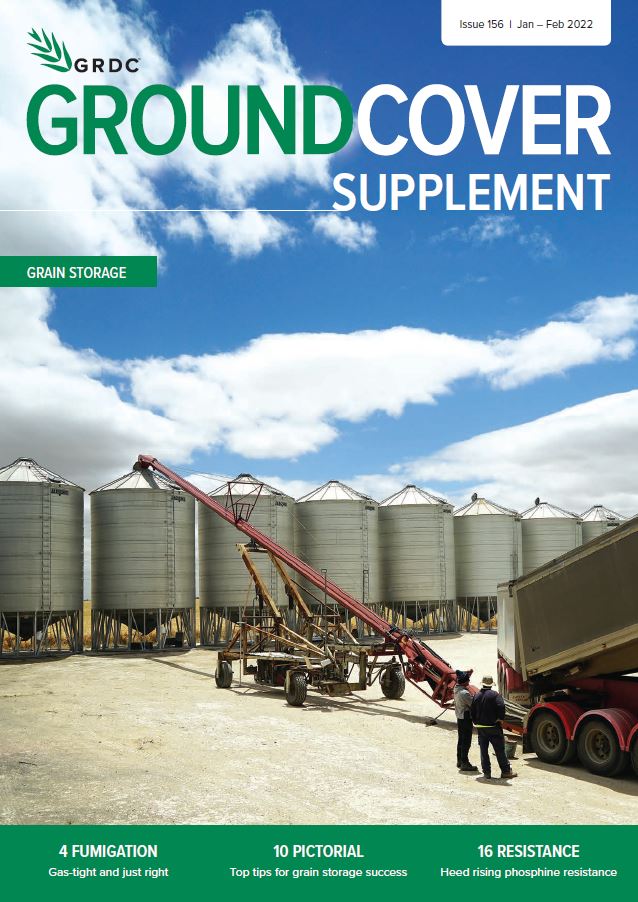This page shows the articles in of GroundCover.
GroundCover is also distributed every two months via mail. If you would like to subscribe to receive the hardcopy magazine, visit our subscription page.
Download supplement-

Lentil storage and the colour of money
Supplement: Grain Storage, January-February 2022 - 2022-01-28T09:00:00+11:00New research will help growers maximise lentil marketability by quantifying the impact of storing grain at high temperatures or with a high moisture content. These conditions can affect quality traits such as seed coat colour (redness), germination efficiency and cooking quality.
-

Users must heed rising phosphine resistance
Supplement: Grain Storage, January-February 2022 - 2022-01-27T09:00:00+11:00Strong resistance to phosphine in stored grain insects has increased and spread over the last decade, with more detections in eastern Australia than Western Australia. The main cause is misuse of phosphine, particularly its use in unsealed storages.
-

Boosting on-farm storage with bags and bunkers
Supplement: Grain Storage, January-February 2022 - 2021-12-14T09:00:00+11:00High-quality sealed silos offer top-of-the-range storage, but growers are also exploring cheaper options to expand on-farm storage capacity. Bags and bunkers have become a popular, more affordable choice, but growers need to be on their toes to avoid costly failures with these temporary solutions.
-

Top tips for grain storage success
Supplement: Grain Storage, January-February 2022 - 2021-12-12T09:00:00+11:00GRDC’s grain storage extension team share images of their favourite storage facilities; highlighting features, ideas and innovations to help inspire other growers who are investing in grain storage infrastructure.
-

Phosphine venting and delivery limits require more research
Supplement: Grain Storage, January-February 2022 - 2021-12-10T15:00:00+11:00There is no argument that testing grain deliveries for phosphine residue is needed to ensure operator safety and label compliance. However, preliminary research has revealed more work is needed to avoid costly rejection of truckloads, including operators who are following phosphine label directions.


























































